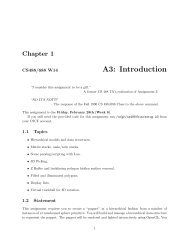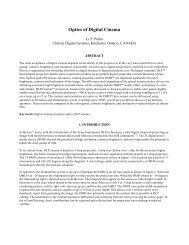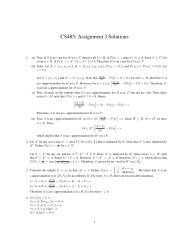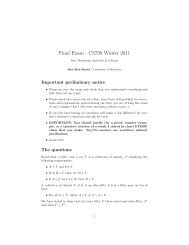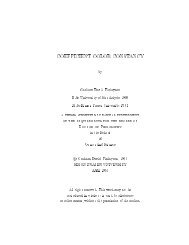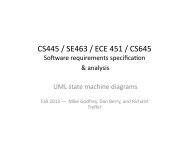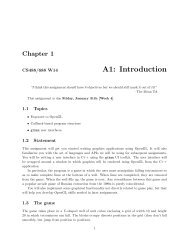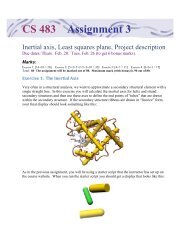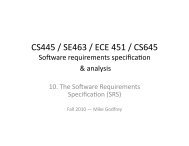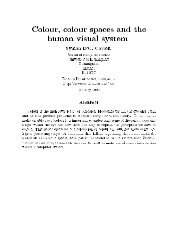Past Midterm and Exam Questions (PDF) - Student.cs.uwaterloo.ca ...
Past Midterm and Exam Questions (PDF) - Student.cs.uwaterloo.ca ...
Past Midterm and Exam Questions (PDF) - Student.cs.uwaterloo.ca ...
Create successful ePaper yourself
Turn your PDF publications into a flip-book with our unique Google optimized e-Paper software.
CS488/688 Introduction to Computer Graphi<strong>cs</strong> 47<br />
16.6 Radiosity vs. Ray Tracing [Last Used: Fall 2002 Final]<br />
The energy balance equation gives an expression for the amount of energy (radiance) leaving a<br />
point on a surface in the scene. Essentially, it is a formula for L(x, θ x , φ x , λ), where x is a point on<br />
the surface, θ x is the incoming direction, φ x is the outgoing direction (both directions are 3-space<br />
vectors), <strong>and</strong> λ is the wavelength of light for which we are computing the energy leaving the surface.<br />
This equation involves an emission term, <strong>and</strong> a triple integral over all incoming directions <strong>and</strong><br />
wavelengths of the incoming energy from the scene, with terms to account for the relevant geometry.<br />
The equation also accounts for the reflective properties of the surface in question.<br />
In general, not only is the equation impossible to solve analyti<strong>ca</strong>lly, we are unable to measure<br />
many of the properties that are required (such the reflective properties of the surface).<br />
For those who are interested, one version of this equation is given below. However, the equation<br />
itself is not needed to answer this question.<br />
1. Describe what simpflifying assumptions <strong>and</strong> approximations are made in ray tracing to allow<br />
us to solve a simplified version of this equation (you do not have to give this equation).<br />
As a result of these assumptions, what visual effects are we unable to model, <strong>and</strong> what other<br />
artifacts are introduced in the final results?<br />
2. Describe what simplifying assumptions <strong>and</strong> approximations are made in radiosity to allow us<br />
to solve a simplified version of this equation (you do not have to give the equation).<br />
As a result of these assumptions, what visual effects are we unable to model, <strong>and</strong> what other<br />
artifacts are introduced in the final results?<br />
Energy Balance Equation:<br />
L o (x, θ o x, φ o x, λ o ) = L e (x, θ o x, φ o x, λ o ) +<br />
∫ π<br />
2<br />
• L o (x, θ o x, φ o x, λ o ) is the radiance<br />
– at wavelength λ o<br />
– leaving point x<br />
– in direction θ o x, φ o x<br />
0<br />
∫ 2π ∫ λmax<br />
0<br />
λ min<br />
ρ bd (x, θ i x, φ i x, λ i , θ o x, φ o x, λ o )<br />
cos(θ i x)L i (x, θ i x, φ i x, λ i )dλ i sin(θ i x)dφ i xdθ i x<br />
• L e (x, θ o x, φ o x, λ o ) is the radiance emitted by the surface from the point<br />
• L i (x, θ i x, φ i x, λ i ) is the incident radiance impinging on the point<br />
• ρ bd (x, θ i x, φ i x, λ i , θ o x, φ o x, λ o ) is the BRDF at the point<br />
– describes the surface’s interaction with light at the point<br />
• the integration is over the hemisphere above the point



